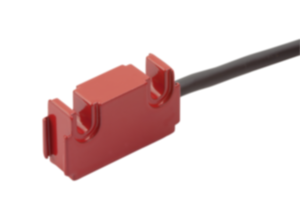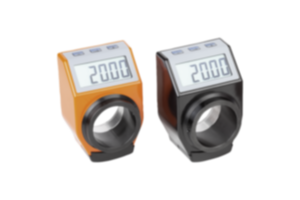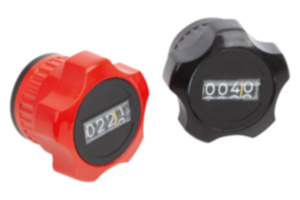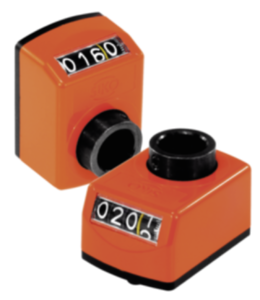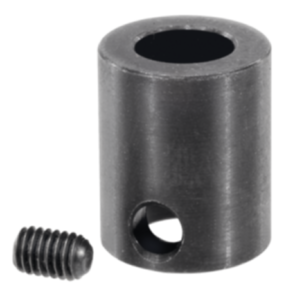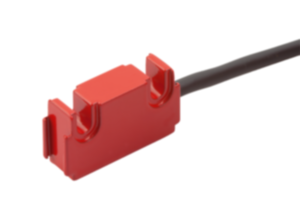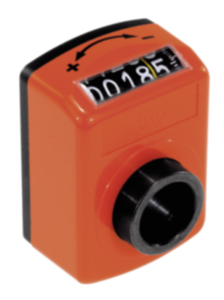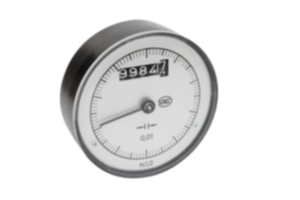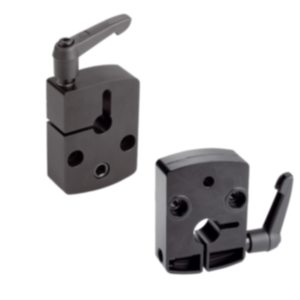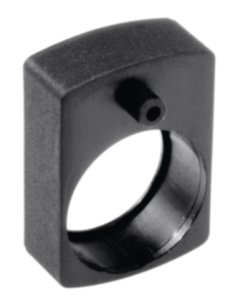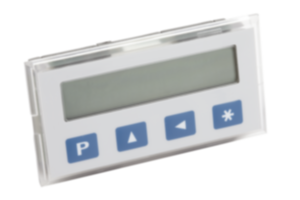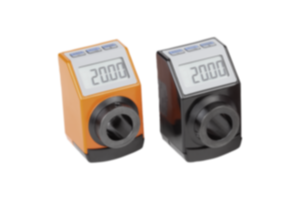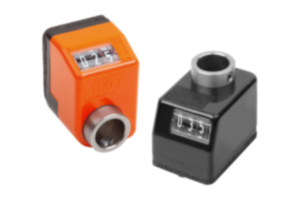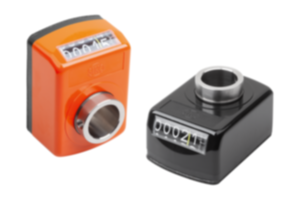Hygienic DESIGN by KIPP
Hygiene is an indispensable basic requirement not only in food production! Hygiene has ever been of great importance in countless other industries such as the pharmaceutical industry or when manufacturing paints and varnishes.
The reason is that it is desirable to produce goods with the smallest possible quantities of preservative agents. But at the same time, a long shelf life should be a given.
The manufacture of goods containing small amounts of preservative agents and a long shelf life requires production environments that eliminate any risk of contamination with microorganisms or dirt.
In plant construction, this means designing all components and surfaces accordingly.
The demand in respect of hygienic design is therefore clear! Dirt is not to stick to the elements and if they do, it must be possible to easily remove them.
To keep your production contamination-free, KIPP manufactures standard and operating parts in Hygienic DESIGN. The range includes 17 workpieces that meet the requirements of EHEDG and have past the DGUV test.
What is Hygienic DESIGN?
Requirements of Hygienic DESIGN
Basis of Hygienic DESIGN
Advantages of Hygienic DESIGN
Hygienic DESIGN in the KIPP range
KIPP as an experienced manufacturer
What is Hygienic DESIGN?
Hygienic DESIGN is a systematic approach when designing production facilities, machines, equipment and working environments. Hygienic DESIGN creates optimum hygienic conditions to minimise contamination of food, pharmaceutical articles or other sensitive materials.
Typical features of hygienic design include:
| 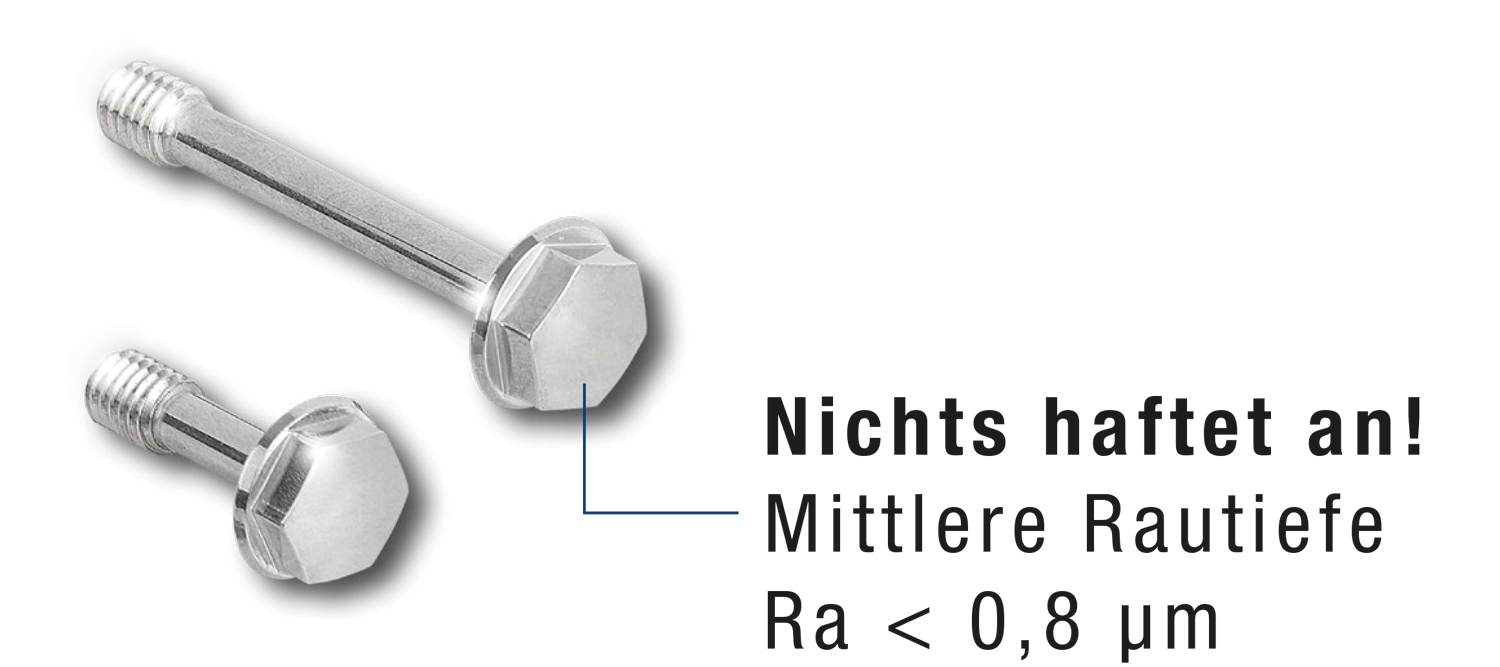 |
Requirements of Hygienic DESIGN
The requirements for the setup of parts in Hygienic DESIGN reflect some of the typical characteristics. Requirements can be divided in two major areas.
Material
The material of individual components plays an important role. The following materials were used in the manufacture of KIPP's Hygienic DESIGN parts:
- Stainless steel: More precisely, stainless austenitic chromium-nickel-molybdenum stainless steel. For more information see - Stainless steel 1.4404.
- EU and FDA compliant plastics: Whether POM or silicone, the plastics we use are EU and FDA compliant. For more information about POM see here.
Surface
Cleanability of surfaces plays a decisive role in Hygienic DESIGN. It is essential that surfaces are designed to be easily cleaned to protect food or other goods from contamination. This entails that any unevenness must be avoided to prevent dirt or germs from entering cracks or crevices. To ensure that no residue remains in areas that are difficult to access, it is important that corners and edges have a radius of 6 mm or more.
Special attention should also be paid to the O-ring grooves. These are often potential collection points for dirt and bacteria. It is important that the O-ring grooves are of hygienic design. That way O-ring grooves allow for effective cleaning and minimise the risk of contamination.
Basis of Hygienic DESIGN
Hygienic DESIGN by KIPP is based on input from various sources.
- EHEDG
- DGUV test
- FDA
European Hygienic Engineering & Design Group - EHEDG
The European Hygienic Engineering & Design Group (EHEDG) was initiated in 1989. It brings together a broad spectrum of experts from the fields of machine construction and food production, suppliers of the food industry, research institutes, universities and public health authorities. As a non-profit consortium, EHEDG strives to continuously improve all aspects of food production in terms of hygiene technology and design. Based on about 45 guidelines, the EHEDG tests products and issues certificates to product manufacturers.
The EHEDG guidelines are, in accordance with applicable laws, carefully passed on to the members. This ensures that food production always meets the highest hygienic standards.
EHEDG's mission is to enable safe production of food through expertise in hygienic engineering and design. This is done by promoting hygienic designs and environments in all areas of food production.
KIPP is a member of EHEDG! The implementation of the standards for Hygienic DESIGN as defined by EHEDG is our responsibility.
DGUV test by Deutsche Gesetzliche Unfallversicherung
The DGUV test is a safety test carried out by the German Social Accident Insurance (DGUV). It serves to test goods, machines and work equipment as to their safety and conformity with applicable health and safety regulations. Aim of the DGUV test is to identify and minimise potential sources of danger.
important for the production of our standard and operating parts in Hygienic DESIGN is the Prüf- und Zertifizierungsstelle Lebensmittel und Verpackung (PZL), the Food and Packaging Testing and Certification Centre. It is a specialised institution that deals with the testing and certification of machines, plant and work equipment in the food and packaging industry.
During the DGUV test, various criteria such as design, materials, operability and safety precautions are assessed. Testing is often carried out by independent testing centres or experts. They neutrally check compliance with legal requirements and issue certificates or test reports if necessary.
The DGUV test is mandatory in many sectors, especially in the industry, to ensure that work equipment and machinery meet the required safety standards and that a safe working environment is guaranteed.
Food and Drug Administration - FDA
FDA is short for Food and Drug Administration and is a US federal agency. In Germany the Bundesamt für Verbraucherschutz und Lebensmittelsicherheit or Federal Office of Consumer Protection and Food Safety compares to the FDA. As KIPP is a global player, our standard and operating parts in Hygienic DESIGN have also to fulfil the quality requirements of the FDA.
Advantages of Hygienic DESIGN
Hygienic DESIGN offers numerous advantages for companies in different industries. Among them:
- Ensuring food safety: One of the main objectives of Hygienic DESIGN is to ensure the safety of food and other sensitive materials by minimising potential sources of contamination. This reduces the risk of food poisoning, illness and quality defects.
- Reducing production time: This advantage results from fewer or shorter cleaning time. Such remaining time allocated to cleaning can be used for the production of more goods. Besides shorter cleaning times the KIPP's Hygienic DESIGN also saves on fresh water and cleaning agents.
- Improvement of product quality: Hygienic DESIGN aims to improve the quality of manufactured goods by promoting compliance with hygiene standards and practices. Clean production environments and machines help minimise contamination and product defects.
- Increased cost efficiency: By designing systems and equipment according to the principles of Hygienic DESIGN, companies are able to reduce costs long term. Efficient cleaning processes, reduced downtime due to contamination and fewer rejects lead to improved profitability.
- Compliance with legal provisions: Hygienic DESIGN helps companies to comply with legal provisions and guidelines in the areas of food safety, health and safety at work. This is particularly important in order to avoid legal problems and sanctions.
- Strengthening customer confidence: A consistent Hygienic DESIGN shows customers and consumers the company's commitment to quality, safety and hygiene. This strengthens consumer confidence in the goods and the image of the brand.
Companies should focus on Hygienic DESIGN as it offers a number of important benefits that may have a positive impact on their operations, product quality and corporate image.
Hygienic DESIGN in the KIPP range
The product line, Novonox Hygienic by KIPP is a complete success. This product line includes Hygienic DESIGN and Hygienic USIT®. Both complement each other perfectly. Hygienic DESIGN refers to the design specifications of individual machine components. Hygienic USIT products are brand-protected, patented stainless steel components.
Would you like to know more about Hygienic USIT® ?
The category Hygienic DESIGN includes 17 products such as hexagonand ball head screws in Hygienic DESIGN. Various quarter-turn lock are also part of this category.
There are 3 different designs of quarter-turn locks.
The quarter-turn lock with O-ring meets hygiene requirements of DIN EN 1672-2 and DIN EN 14159. Each of the three hygienic stainless steel quarter-turn locks prevent germ infestation and meets strict hygiene and food production requirements. These are suitable for the foodstuff and beverage industry.
Besides thread covers and levelling feet made of stainless steel 1.4301 sockets and plastic inserts may be found in this product category. Each of the products may be installed by combination spanner with protective caps.
Products with a sealing ring in Hygienic DESIGN are particularly noteworthy in this category. The main function of sealing rings is to protect cracks, dead spaces or crevices from ingress of product residues or cleaning fluids. Sealing by KIPP can be used from -20 to +100°C. The sealing ring in Hygienic DESIGN is made of food-compliant material and has a geometry optimised for cleaning. It is classed as an accessory to hex head bolts and Hexagon nuts in this product category.
Products of the category Hygienic DESIGN are mainly manufactured from stainless steel 1.4404 and 1.4301 . Our material overview provides a more detailed insight into the composition of these two grades of stainless steel.
KIPP as an experienced manufacturer
As an experienced manufacturer in the field of Hygienic DESIGN, KIPP has many years of expertise in the development and production of hygienic components. With an understanding of the standards for hygienic applications, KIPP offers high-quality products that comply with the strictest hygiene regulations. As a manufacturer, KIPP realises components without dead spaces, featuring smooth surfaces and easy-to-clean designs.
That way KIPP supports you in implementing your hygiene requirements, whether in the food, pharmaceutical, chemical industry or other hygiene-sensitive areas.

